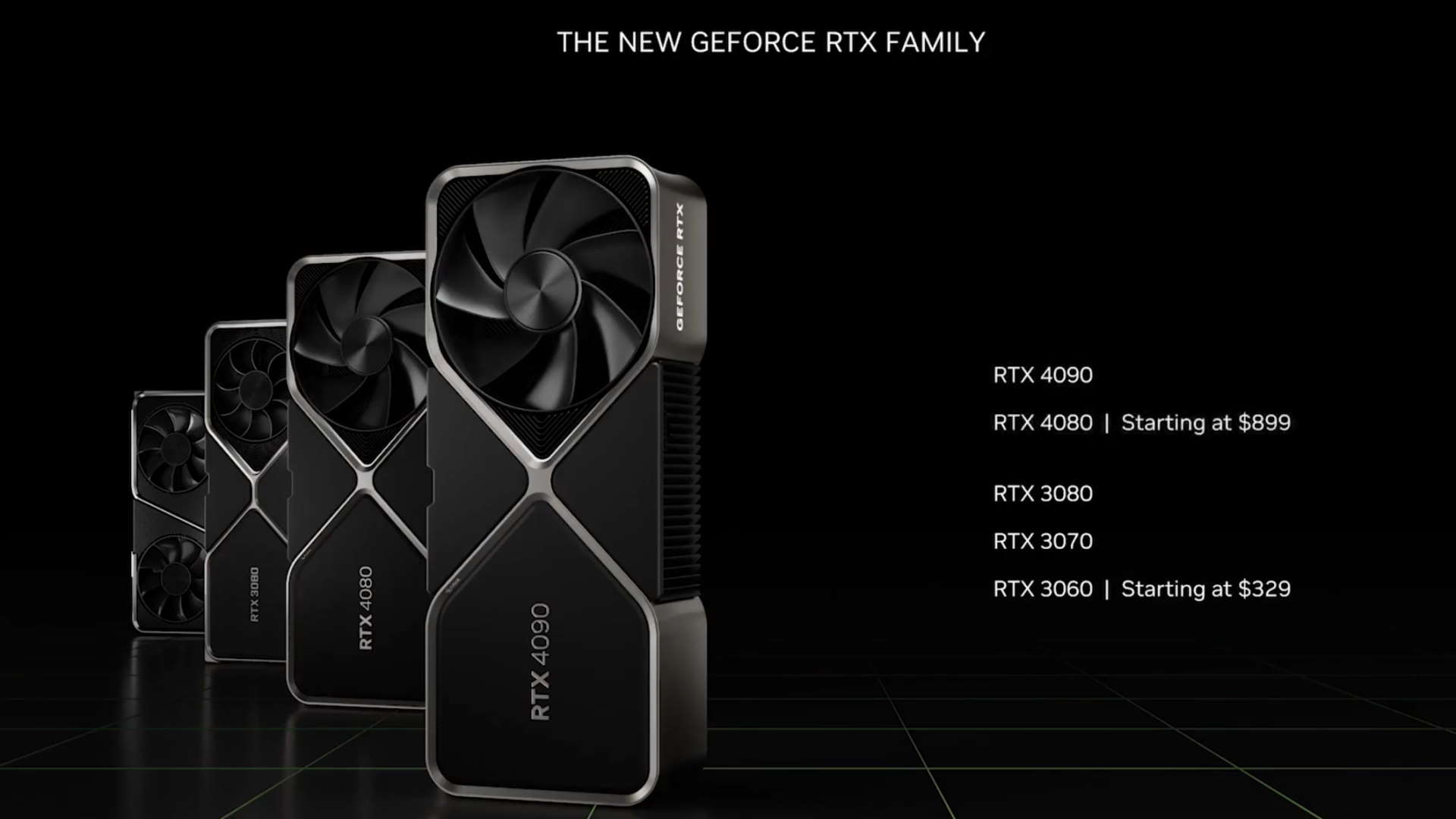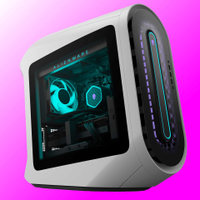Looks like the RTX 30-series is sticking around alongside the RTX 4090 and RTX 4080
Jen-Hsun talks about "the best gaming platform in the world" as the new RTX family of GPUs.

The way the "New GeForce RTX Family" is being presented, it sure looks like the current-gen RTX 30-series cards will sit alongside the new RTX 40-series GPUs for a good while yet.
"The best gaming platform in the world just got better," says Jen-Hsun Huang at the GeForce Beyond Special Broadcast from GTC. Introducing us to the RTX 4090 and RTX 4080 graphics cards, starting at $899 for the cheapest new Lovelace card, Nvidia is leaving a lot of PC gamers out of the next-gen mix.
But by keeping the RTX 30-series cards around alongside the RTX 40-series, it can carry on presenting the RTX Family as a complete ecosystem of GPUs.
"Our 30-series, starting at $329, are the best GPUs in the world serving mainstream gamers," says Huang. "RTX 4090 and RTX 4080 GPUs, starting at $899, deliver the ultimate performance to enthusiasts."
Interestingly, none of the Ti cards are listed on the new family slide, and neither are the RTX 3090 cards.
In light of the price and performance of the RTX 4090 and RTX 4080, there is really no room for those high-end cards, especially as there's no amount of price cutting that could really be done to make them work, given how costly those big chunks of silicon would still be to produce.
Keeping the RTX 3060, RTX 3070, and RTX 3080 around, however, can aid Nvidia to deliver on different price points all the way up to the RTX 40-series stack when it doesn't have Lovelace-based cards to do so. Yet.
Keep up to date with the most important stories and the best deals, as picked by the PC Gamer team.
We can maybe wish for some price cuts on the RTX 3070 and RTX 3080 in the days to come, but I feel they might be as cheap today as they're going to get. Fingers crossed I'm wrong.
Best gaming PC:
The top pre-built machines from the pros
Best gaming laptop:
Perfect notebooks for mobile gaming

Dave has been gaming since the days of Zaxxon and Lady Bug on the Colecovision, and code books for the Commodore Vic 20 (Death Race 2000!). He built his first gaming PC at the tender age of 16, and finally finished bug-fixing the Cyrix-based system around a year later. When he dropped it out of the window. He first started writing for Official PlayStation Magazine and Xbox World many decades ago, then moved onto PC Format full-time, then PC Gamer, TechRadar, and T3 among others. Now he's back, writing about the nightmarish graphics card market, CPUs with more cores than sense, gaming laptops hotter than the sun, and SSDs more capacious than a Cybertruck.


